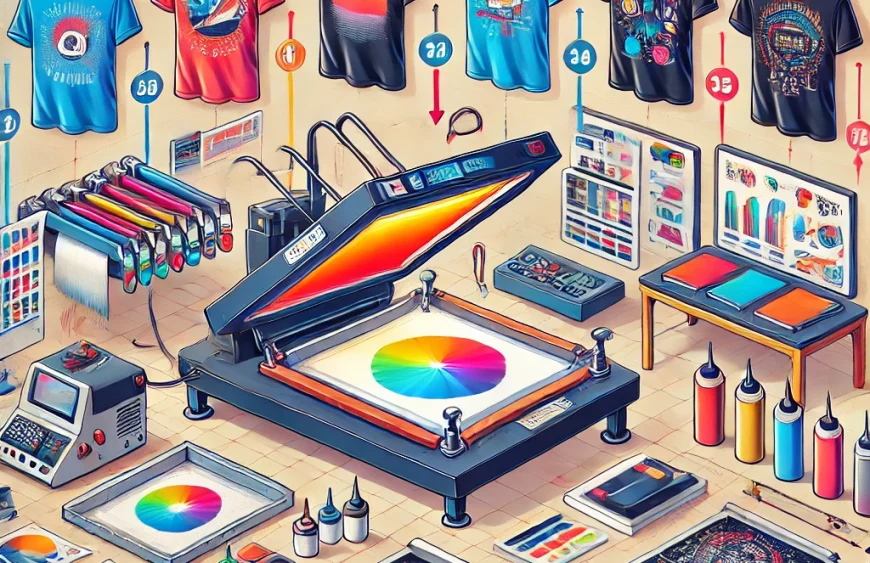Screen printing has long been the go-to method for producing high-quality merchandise, particularly for bulk orders. It offers exceptional durability and vibrant colors that can withstand numerous washes without significant fading. This method is especially effective for designs with solid colors and large areas of uniform print. The process involves creating a stencil (or screen) for each color in the design, which allows for precise and consistent application of ink.
Pros and Cons of Screen Printing
Pros:
- Durability: Screen printing produces long-lasting prints that resist fading and cracking over time.
- Cost-Effective for Large Orders: The setup cost is spread across the quantity, making it economical for bulk production.
- Vibrant Colors: The technique allows for the use of thicker inks, resulting in more vibrant and opaque colors.
- Versatility: Suitable for a wide range of materials, including cotton, polyester, and blends.
Cons:
- Setup Time: The initial setup is time-consuming, requiring a screen for each color.
- Not Ideal for Small Orders: Higher setup costs make it less economical for small quantities.
- Limited Detail: Not as effective for designs with intricate details or gradients.
Direct-to-Garment (DTG) Printing
DTG printing is a relatively newer method that uses inkjet technology to print directly onto the fabric. It’s similar to how a standard printer works, but for clothing. This method excels in producing detailed and colorful prints, making it ideal for designs with a lot of detail and color variations.
Pros:
- No Setup Costs: Ideal for small orders and one-offs, as there are no screen or setup costs.
- Detail and Color Range: Excellent for detailed designs and images with multiple colors and gradients.
- Quick Turnaround: Faster production time as there is no need for screen setup.
Cons:
- Durability: Generally, less durable than screen printing, as the ink sits on the fabric surface and can fade or crack over time.
- Cost for Bulk Orders: More expensive per unit for large quantities compared to screen printing.
- Fabric Limitations: Works best on 100% cotton fabrics, and performance can vary on blends.
Direct-to-Film (DTF) Printing
DTF printing is a newer technology where designs are printed onto a special film and then transferred to the garment using heat and pressure. This method offers the flexibility to print on a variety of materials and is known for its strong adhesion and vibrant colors.
Pros:
- Versatility: Can be used on a wide range of materials, including cotton, polyester, blends, and more.
- Detailed Prints: Capable of producing detailed and vibrant prints with smooth gradients.
- No Pretreatment Needed: Unlike DTG, DTF doesn’t require the garment to be pretreated before printing.
Cons:
- Durability: While better than DTG in some cases, it may still not match the longevity of screen printing.
- Transfer Time: The transfer process can add to the production time, making it slower for large orders.
- Feel: The transfer can sometimes be felt on the fabric, which might not be desirable for all customers.
Conclusion
While each printing method has its strengths, screen printing stands out for its durability and cost-effectiveness in large orders. It’s the preferred choice for bulk merchandise that needs to withstand regular wear and washing. However, for intricate designs, smaller runs, or printing on various fabrics, DTG and DTF offer viable alternatives. The choice ultimately depends on the specific needs of the project, including the design complexity, order size, and fabric type.
